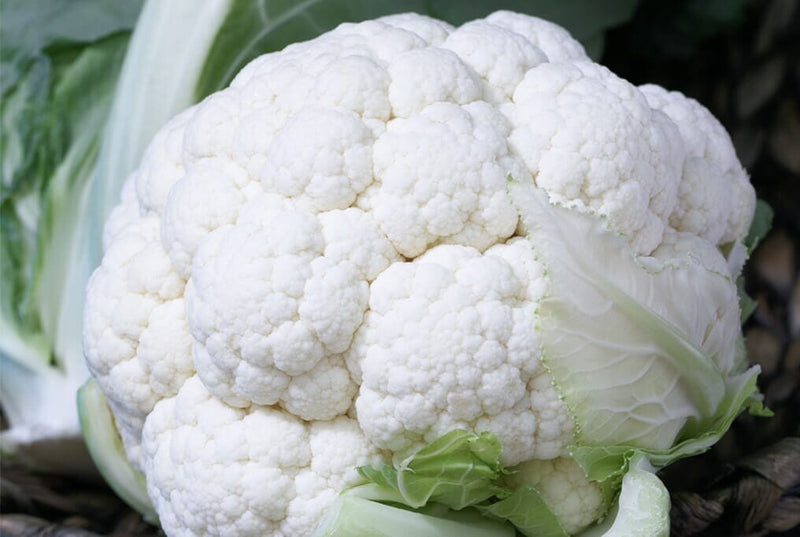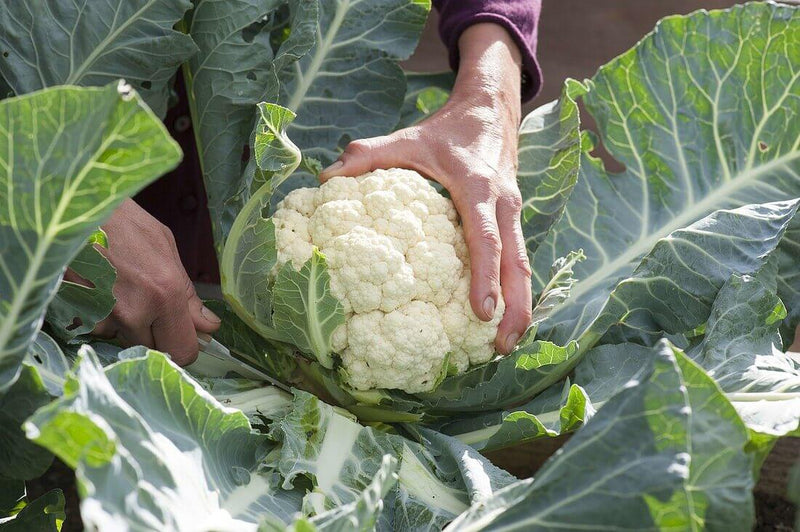Quick Overview
| Category | Details |
|---|---|
| Planting Time | Early spring & late summer/early fall |
| Soil Temperature | 60-65°F growing temp |
| Sunlight Requirements | Full Sun (6-8 hours) |
| Watering Requirements | 1" per week |
| Spacing (In-Ground) | Rows: 30-36", Plants: 12" |
| Spacing (Raised Bed) | 12" apart |
| Fertilizer Guidelines | Heavy feeder – pre-plant & side-dress nitrogen |
Growing Guide Details
Plant Classifications
What Variety to Choose?
When to Plant
Light & Space Requirements

Soil & Fertility
Pest & Disease Control
| Pest/Disease | Control Method |
|---|---|
| Thrips | |
| Horn Worms | |
| Cabbage Looper | |
| Aphids | |
| Flea Beetle | |
| Whiteflies | |
| Cutworms | |
| Pythium Damping-off | |
| Black Rot | |
| Downey Mildew | |
| Powdery Mildew | |
| Alternaria |
Irrigation & Watering Schedule

Harvesting & Storage
Sustainability & Garden Tips
FAQs
How do I get big, firm cauliflower heads?
Ensure consistent moisture, rich soil with added compost, and side-dress with nitrogen. Stress from heat, drought, or poor soil can cause small or “button” heads.
When should I start cauliflower seeds indoors?
Start seeds 4–6 weeks before transplanting outdoors. Plant in early spring for a spring crop or mid-to-late summer for a fall crop.
Why won’t my cauliflower form a head?
Head formation requires cool weather and consistent growth. High heat, poor nutrition, or drought stress can prevent heads from developing.
Why is my cauliflower turning yellow or purple?
For colorful varieties like purple or orange, bright heads are perfectly normal. But for white cauliflower, pink or purple hues can indicate stress from temperature swings or low soil fertility, while yellowing often comes from too much sun. Blanching white varieties helps maintain that classic, bright look.
Can cauliflower regrow after cutting the head?
Unlike broccoli, cauliflower doesn’t typically produce side shoots. Once the main head is harvested, the plant is done.
Published on June 06, 2023
Updated on August 06, 2025



